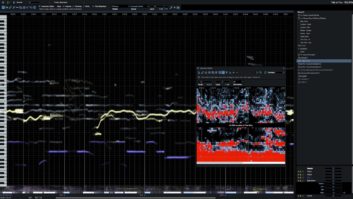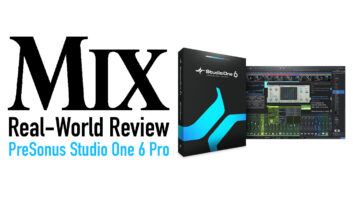If you’re looking to buy a new audio interface, your choices are plentiful. I don’t have statistics for it, but speaking anecdotally, it seems like there are more interfaces on the market than ever, with more being announced all the time.
As you might expect in any competitive market, some exaggeration occurs in the marketing of these products. I don’t say that to knock the interfaces themselves, which, as a whole, are excellent. But some of the ways their features are advertised can be confusing and even misleading to potential customers.
Let’s start with I/O numbers. Many interfaces have digital expansion ports, typically in ADAT format, and those potential connections are included in the I/O count claimed for the unit, and they’re given the same weight as the analog connections. For example, an interface with four analog XLR/1/4-inch combo inputs, four additional analog line inputs and one ADAT optical input would be billed as having 16 inputs—eight analog plus eight ADAT.
Read more Mix Blog Studio: The Joys of Multiband Transient Shaping.
Here’s my beef with that: Those ADAT inputs are more like potential inputs than actual ones. To use them, you need a second piece of gear with ADAT I/O, such as another interface or a mic pre unit, to which you’d connect your sources. Then you’d plug the ADAT output of the second unit to your original interface’s ADAT input to bring those signals into your interface. To equate the ADAT input with its analog counterparts, which can be used directly with sources, is misleading.
The ADAT inputs should be considered expansion ports, rather than inputs, if you ask me. A more accurate way to advertise such an interface’s input spec would be “8(8)” or “8+8,” or something to that effect, which would indicate that there are eight actual and eight potential inputs.
The same is true on the output side. Again, we’re talking immediately usable versus potentially usable, providing you have additional equipment. And while we’re on the subject of outputs, I’ve noticed that some manufacturers include their headphone outputs in their overall output count, while others don’t.
Whether including them is accurate is a bit of a gray area. It’s true that in a pinch, you could get a ¼-inch TRS to TS splitter cable and use your headphone jack as an output feeding something other than headphones. But for the most part, headphone outputs are used for headphones and are functionally a different animal than line outputs.
No matter where you come down in that argument, the fact that some manufacturers include headphone outs in their output count and others don’t is confusing for the consumer. Could we at least standardize it one way or the other?
To be clear, I’m not taking issue with the interface designs, which are by and large excellent, only with how certain specs are expressed to the public. Excellent new interfaces are coming out all the time, and there’s no need to hype them. Let them stand on their features and sound quality, which, by and large, are outstanding and continually improving.







